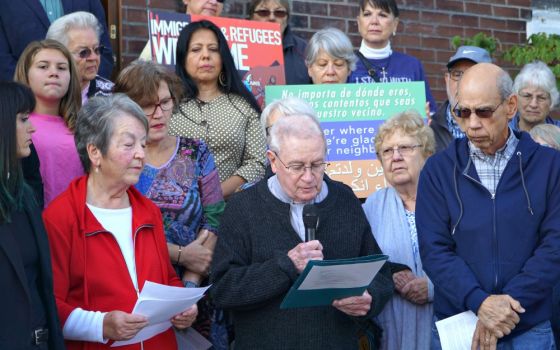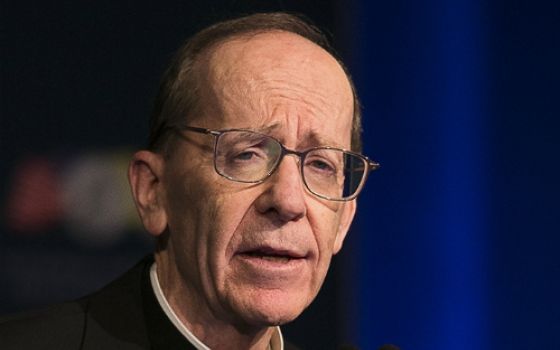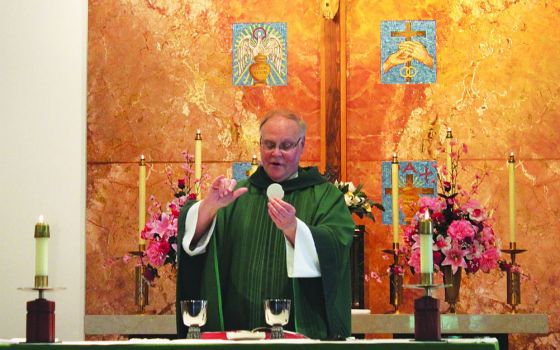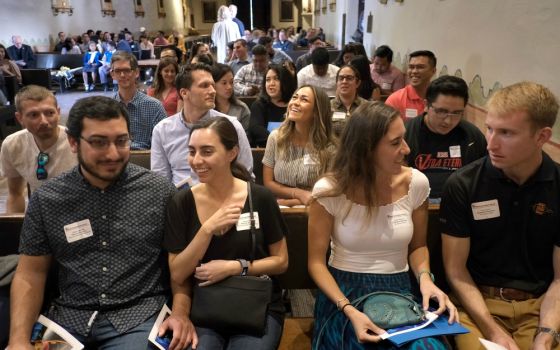Most dioceses offer workshops for new pastors, and the Chicago archdiocese is no different. When Fr. John Waiss of St. Mary of the Angels Church attended one several years ago, the main question he had in mind was one likely familiar for many people, collar or no collar: How to do more with less?
In particular, the priest asked: “Is there anyone who could take a look at parish buildings and look for ways to be more efficient operationally?”
“I’m an engineer myself,” Waiss said. “I have an idea of what can be done. I just wanted to see if we could improve the economics.”
St. Mary of the Angels is a Polish, cathedral-style church built in the 1920s, in Bucktown on the city’s North Side.
Doing more with less, and making scarce dollars stretch as far as they can is also a question at the archdiocesan level. To that end, its real estate office has implemented an effort to compare energy performance across all facilities. Parishes are finding energy efficiency a promising area to explore as well.
More: “Chicago archdiocese commits to energy-efficient buildings in response to pope's encyclical” (July 27, 2015)
Waiss described to NCR the efforts under way at his parish: “We started working on energy and found out there are some programs out there that are very interested in improving energy efficiency and making it economically workable for parishes to do so.” For instance, the archdiocese coordinated with local utilities to enable free reviews of sites for energy efficiency upgrades, free LED lightbulbs and more.
Pope Francis’ encyclical “Laudato Si’, on Care for Our Common Home” and the Christian obligation to do just that, ensuring everyone in it has enough, have provided further reasons for many parishes, dioceses and congregations to move forward addressing a list of possible tasks that could reduce energy use.
“I connected very much with the pope’s encyclical,” Waiss said. “I think it’s something that needs to be implemented locally, within each family as well as within each parish, learn to do more with less. It will make us all happier. That’s what the pope is focused on, each other.”
He continued: “I loved how he wove together all the moral issues, in terms of the environment. It wasn’t just focused on global warming but also the consumerism, the narcissism, accepting our God-given nature, our identity. I saw how all of those were woven together in a beautiful way. He had a clear vision that this is all part of each other.”
Waiss told NCR he has detected a lot of interest among fellow priests in Laudato Si’, eager to find how to put it to work. At the same time, he explained, priests are often bombarded by a multitude of programs and proposals. For example, some propose how, for a fee, they will activate your parish under the guise of assisting the parish but are really geared toward self-promotion. It’s a challenging situation that leaves priests to sift for the truth.
“We get a little leery, have so much hope they are going to work, but get burned sometimes, and it’s easier and safer to continue doing things the way we always have,” Waiss said.
Examples of what has worked at other parishes are particularly valuable, he said: “If you see other parishes doing something and it works, and there isn’t any reason why it can’t work here, that’s different.”
The archdiocese is trying to help its parishes by doing some pre-filtering and finding ways that parishes can access free services, according to Jennifer Shankie, a project manager for the archdiocesan real estate office and a member of its encyclical working group.
For example, the local utility Commonwealth-Edison provided the archdiocese with a list of the 125 non-profits that are using the most energy, of which 63 are Catholic properties, and mostly parish schools. Those buildings are among the most eligible for services available from utilities and prices on purchases.
A month after the Laudato Si’ anniversary, the archdiocese and the Chicago Sustainability Interfaith Partnership are hosting on July 21 a large conservation symposium “to start churches on the road to conservation,” Shankie said.
“Utilities are footing the bill. Utilities have moneys available for this sort of thing,” she said, adding the symposium will have breakout sessions on energy and water conservation, benchmarking performance and more.
Utilities are becoming more accustomed to working with congregations.
In the case of Commonwealth-Edison and People’s Gas, an original rebate program for small businesses qualified only a portion of a Catholic campus, such as a school, while omitting the other buildings. The Conservation & Sustainability Interfaith Partnership then began working with the utility to customize the small-business program to work better for congregations. Their efforts resulted in the rebate including the whole campus and not just the large building that initially qualified.
The Conservation & Sustainability Interfaith Partnership is also working to enable campuses, not just large buildings, to qualify for retro-commissioning: looking at the HVAC system as a whole and what efficiency improvements can be made.
Shankie is also on the board of the Conference for Catholic Facilities Managers and chairs the Energy & Environmental Committee. The latter is putting together plans and a large network around the country that can help if people have questions.
Parishes and dioceses are able to put Laudato Si’ into action by reducing their energy efficiency on-site and by looking at and trying to reduce the carbon intensity of their city or community’s electricity.
“People in the parishes want to know what they can do to implement Laudato Si’ -- how do I take the first step?” Shankie said.
[Marie Venner is chair of the National Academies’ Transportation Research Board subcommittee on Climate Change, Energy, and Sustainability and former co-chair of the Risk and Resilience Planning and Analysis subcommittee. She is also on the Steering Committee of the Global Catholic Climate Movement.]
Editor's note: This story is part of a new joint project of two NCR blogs, "Eco Catholic" and "The Field Hospital," looking at parish- and grassroots-level efforts by Catholics to live out Pope Francis' encyclical, "Laudato Si', on Care for Our Common Home." Follow both The Field Hospital and Eco Catholic for future reports.
Want more stories from Eco Catholic? We can send you an email alert once a week with the latest. Just go to this page and follow directions: Email alert sign-up.



